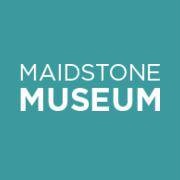Happy 160th Birthday Maidstone Museum!

This year Maidstone Museum celebrates its 160th birthday. First opened in 1858 in the beautiful Elizabethan Chillington Manor, the museum has grown to become one of the largest in the South East. This blog gives an insight into the museum’s foundation and its continued growth.
The museum’s foundation was made possible due to the generous bequest of Dr Thomas Charles of Chillington Manor in 1855. Charles was a gentleman collector and had amassed an assortment of fine art and antiquities. His friend and later executor of his will Alexander Randall persuaded Charles to leave his collection to the town. This was on the understanding that, in a suitable place, it could be kept together and used for study and inspiration. Following much discussion by the town council and public consultation, it was agreed that the creation of a museum – made possible by the Ewart Act of 1850 and 1855 – would have great recreational and educational benefit for the county town of Kent and its people.
With a founding collection, the next problem was where to establish the museum? The Town Hall in Maidstone didn’t offer suitable space and Chillington Manor was initially disregarded as it was in disrepair. However with foresight a decision was taken by the council to hire the building while the Charles bequest was being sorted; and in October 1856 they purchased the central portion for £1,200, spending a further £300 undertaking necessary repairs. On 20 January 1858 to the sound of pealing bells from All Saints’ Church, the Charles Museum was opened to the public.
As the collections grew through donations and bequests, the museum expanded with public support. In 1868-9 the east wing designed by the local architect Hubert Benstead was built. This was quickly followed in 1871 by the purchase and rebuilding of the west wing. Funding was provided by Alexander Randall for the east wing and Julius Brenchley, Randall’s nephews Samuel and Richard Mercer and public donations for the west wing.
Archaeology Gallery; Brenchley Room display; The Great Hall; Lady Godiva; Natural History Gallery; Stairs
Between 1870 and 1872 Brenchley, through the encouragement of the second curator Mr Lightfoot, paid over £6,000 for the grounds and dwellings surrounding the museum and church. The area was landscaped to provide for a town garden and a fitting surrounding to the museum, and is named Brenchley Gardens in memory of the great explorer.
Under Randall, Lightfoot and Benstead’s guidance, the museum was sympathetically restored and extended.
Work continued and in 1874 the Tudor south wing from East Farleigh Court Lodge was rescued and rebuilt behind the museum, followed later by a chapel and observation tower. Flanked by new wings the Elizabethan façade looked untidy and in 1875 Mr Laurence paid for its refurbishment.
Brenchley Gardens, then an orchard, being laid out c 1870s; Buildings in connection with the Charles Museum c. 1880-90
The next big development came in 1890 when the Bentlif wing, again designed by Benstead, was erected. In the 1920s a further wing to house a collection of Baxter prints donated by Lady Bearsted and Japanese art donated by her son Sir Walter Samuel was added. Finally in the 1970s a purpose built museum store was created.
Celebrations on 6 July 1893 marking the laying of the foundation stone of the Technical Institute; the Gatehouse; Maidstone Museum with the Bentlif Wing and Gatehouse
Sadly in 1977 a fire ripped through the west wing resulting in the loss of a small section of the Natural History collections and extensive damage to the building.
More recently, in 2012, the museum opened an extended and renovated East Wing, to provide new visitor facilities, education spaces, exhibition spaces and enhanced storage facilities to meet the needs of our 21st century audience.
You can view the timeline for the history of the museum here: https://museum.maidstone.gov.uk/our-museums/history/timeline/
From the outset the museum has relied upon the support of donors and benefactors to grow into one of the best museums to be found in the South East. In its 160th year the museum is looking forward to further developments in the coming decades as it adapts to the changing role of museums and their place within communities.
With over 600,000 objects and space to ‘wander, wonder and adore’ the museum continues to be a place for inspiration and education for the people and visitors to the county town of Kent.
